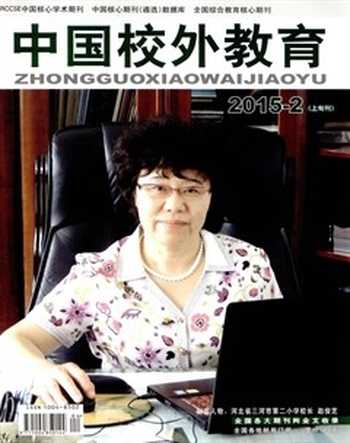The Translation of the Long English Sentence
陈阳
Abstract:Among various English sentence patterns,long English sentences are the most striking representation of the feature of the English sentence pattern.In the practice of translation,people have suggested a number of approaches to tackle the translation of long and complex English sentence.
Key words:long English sentencetranslationtranslation methodsTranslating in original sequencer in reverse order,translating by division or by synthesis.For the convenience of explanation,these approaches may be brought into specific methods or techniques such as embedding,cutting,reversing,splitting,inserting,recasting,etc.
ⅠTwo stages and Seven steps in Translating a Long Sentence
Stage A:Comprehension
Step 1:present the long sentence in a skeleton form.
Step 2:infer the main idea from the context and the whole text.
Step 3:distinguish between the principle and subordinate element.
Step4:find out the interrelation between principle and clauses.
Stage B:Presentation
Step 5:enter on a tentative translation of each sentence division.
Step 6:rearrangement and synthesis.
Step 7:finishing touches.
ⅡMethods of Translating Long English Sentence
1.Embedding
The so-called embedding means placing the modifiers (including phrases and clauses) before the word being modified,thus the modifiers are embedding in the Chinese sentences.The preposition embedding makes the Chinese version compact and coherent;therefore,it is frequently adopted in translating attributive and appositive clauses.
2.Cutting
Sometimes,however,English modifiers are too long to be placed before the word being modified in the Chinese version.In this case,we have to resort some other means most conveniently,cutting.By means of cutting,we may sever a long English sentence and rearrange the parts in sense groups,and then translate them separately into Chinese.
3.Reversing
Reversing in translating long and complex English sentence refers to adjusting the sequence of a given sentence so as to made it conform to Chinese usage.A sentence of pre-position may be placed at the end of the whole text,and on the other hand,an end-position element may be placed at its beginning.
4.Splitting
The so-called splitting means taking certain elements out of a sentence and treating them separately.This technique is usually adopted when both cutting and embedding fail to work in dealing with the long and complete sentence.It can conclude splitting a single word,a phrases or a clause.
5.Inserting
By inserting here we mean putting some additional punctuation marks such as dash,parenthesis,colon,etc.,in a long and complex sentence so as to make the Chinese version both clear and smooth.
6.Recasting
Recasting in translation entails skillful control over both the English and the Chinese language on the part of the translator,who,on the basis of accurate comprehension of the original,should flexibly adjust or rearrange it without considering the original structure or sequence.
The studies of this paper on the translation of long English sentence is mainly concerned with techniques of translating the long English according to the Chinese norms of sentence-building. The prerequisites for translation of the long English sentence lie in the translator's correct comprehension and adequate representation of the source language.
参考文献:
[1]程洪珍.英汉语差异与英语长句的汉译.中国科技翻译,2003,(11):21-23.
[2]毛贵荣.长句一二三.上海科技翻译,2002,(01):17-19.
[3]王治奎.大学汉英翻译.济南:山东大学出版社,2001.

